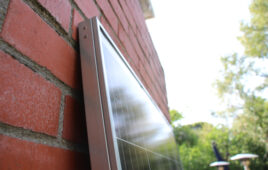As the United States enters a new era of solar manufacturing boosted by manufacturing tax credits included in the Inflation Reduction Act, U.S. solar developers and installers will still rely on imported modules and other components as domestic facilities get started. Imported solar panels are currently met with Section 201 tariffs through 2025 (bifacial modules are exempt), and the Dept. of Commerce is currently deciding whether to place antidumping and countervailing duties (AD/CVD) on panels coming from Southeast Asia.
The Commerce investigation started in March 2022 after California-based solar panel assembler Auxin Solar petitioned for a review of Chinese solar panel manufacturers moving portions of their manufacturing operations to Southeast Asia as a way to circumvent AD/CVD decisions in place against Chinese solar manufacturers since 2012. Specifically, Auxin wanted a deeper look at solar operations in Cambodia, Malaysia, Thailand and Vietnam to determine if Chinese wafers, aluminum frames, backsheets and more have been used in exported cells and modules. If enough Chinese product is found in Southeast Asian module exports, DOC could extend the AD/CVD to the mentioned countries.
As the investigation began, module supply from Southeast Asia — a region that supplied 80% of U.S. demand in previous years — was limited or completely halted. U.S. utility-scale projects were effectively stopped, and many in the industry pleaded for Commerce Secretary Gina Raimondo to quickly resolve the investigation to get module supply back on track.
The Biden Administration stepped in this June by issuing an executive order placing a two-year pause on any tariffs related to this case “in order to ensure the U.S. has access to a sufficient supply of solar modules to meet electricity generation needs while domestic manufacturing scales up.” Commerce would continue its investigation while giving U.S. contractors some breathing room to get projects online in the interim.
DOC was expected to reveal its preliminary determination next week before issuing its final determination in early 2023. The preliminary determination has now been pushed to November 28, 2022.
Original petitioner Auxin Solar first requested that Commerce extend the deadline in order to “fully develop and complete the records of the inquiries.” DOC stated that there are many complex issues related to the investigation, including multiple questionnaires and follow-ups that the department needs additional time to analyze. Auxin claims that the Southeast Asian solar companies have “misled lawmakers by failing to provide Commerce with all of the available information in a timely manner to quickly reach a preliminary conclusion.”
This extension will push the deadline for a final determination to April 2023 at the earliest, but likely to mid-June 2023.
After Biden’s executive order, some Southeast Asian module suppliers expected to get panels into the United States as early as the end of Q3. While the order has brought some relief to supply questions, the industry also is dealing with the Uyghur Forced Labor Protection Act (UFLPA) which has held some modules at ports as their bills of material are reviewed to determine if any components were made with slave labor.
Research group Wood Mackenzie had predicted a 6.3-GW reduction in 2022 installations based on the uncertainty around the anti-circumvention investigation. While the two-year pause would help a bit, WoodMac still said the United States will see fewer installations come online than planned for both 2022 and 2023.






Tell Us What You Think!